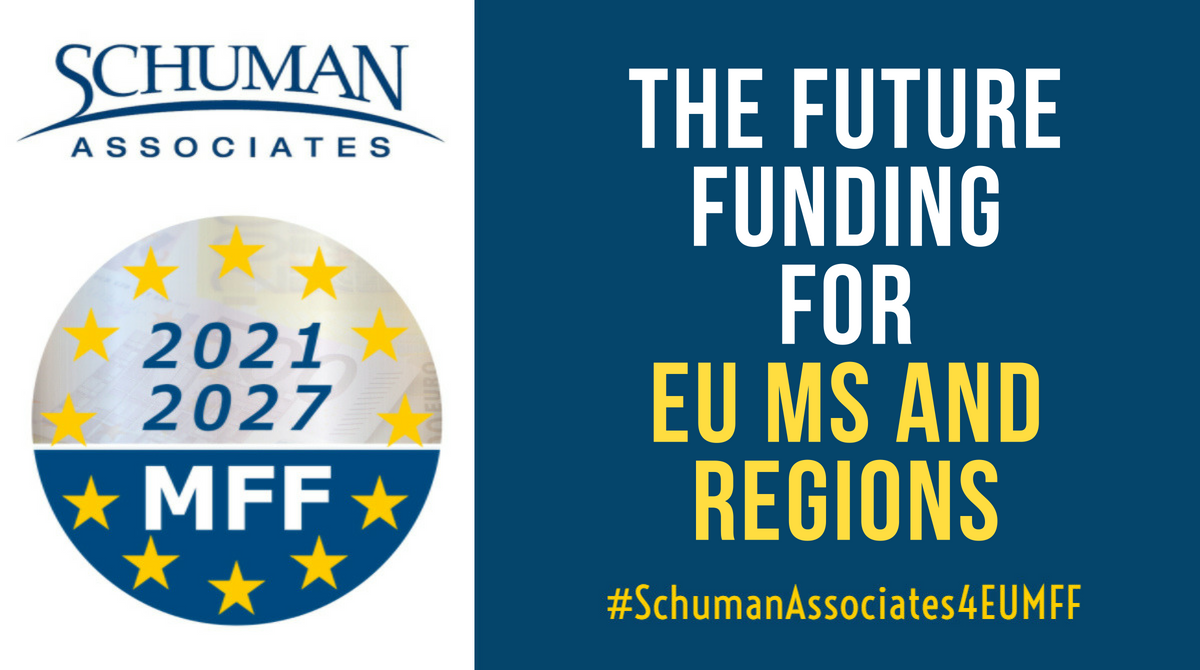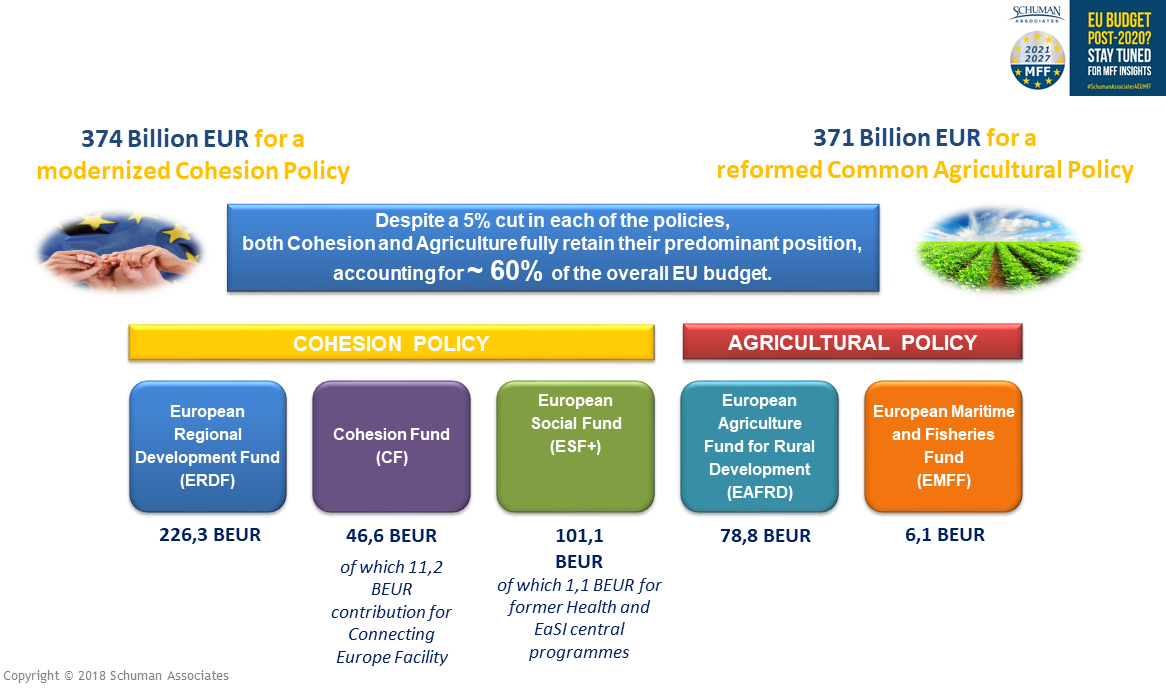European Structural and Investment Funds post 2020

The European Commission’s proposal on the next 2021-2027 EU Budget starts a dynamic debate on the future of Europe, but also of EU Funding to its Member States and regions.
Despite a 5% cut in each of the Cohesion and Agricultural policies, the European Structural and Investment Funds (ESIF) remain the most powerful investment tool of the European Union. They account for more than a half of the proposed 7-year EU Budget (Cohesion Policy - 374 billion EUR and Common Agriculture Policy - 371 billion EUR, including direct payments).
Managed in close cooperation with the Member States, the ESI Funds will continue to drive economic and social investments through the same 5 funds: the European Regional Development Fund (ERDF), the Cohesion Fund (CF), a restructured European Social Fund (merged with other programmes like the Health or Employment and Social Innovation Programme), the European Agricultural Fund for Rural Development (EAFRD) and the European Fisheries Fund (EFF).
ESIF 2021-2027 will continue to support investments in the following key sectors:
- research & innovation
- digital, energy and transport networks
- urban development
- climate change and environment
- transition towards a low-carbon economy
- health, education & social inclusion
- agricultural productivity & competitiveness
- small & medium sized farms

At the same time, a set of key novelties accompany the EC proposal for the new ESIF architecture:
- The GDP per capita will remain the predominant criterion for distributing the funds to countries, while other factors such as unemployment, climate change and the integration of migrants will also be considered.
Hard investments will need to be accompanied by soft measures. - The EC proposes to reduce the pre-financing rates while at the same time increase the national co-financing level. This would consequently lead to less money transferred to countries at the beginning of the funding cycle and more money to be injected by the Member States as part of their co-financing obligations.
- The EU Budget and access to funds will be linked to the European Semester (achievement of reforms in key areas like employment, health, environment etc.) and the respect of the rule of law (possibility to suspend, reduce or restrict access to funding in case of fraud or deficiencies in the judicial system).
- State aid rules will be simplified and greater focus will be put on results rather than costs.
The Commission is expected to release the ESIF sectoral framework legislation by beginning of June. More details will then be available on the further conditions and way of implementing the 5 funds.
The EC Budget proposal together with the legal framework would then enter the negotiation phase with the European Parliament and the Council, with the aim to have an agreement sealed by May 2019.
For information on EU Post 2020 funds, follow our dedicated series of briefs under the #SchumanAssociates4EUMFF or please contact us at
By accepting you will be accessing a service provided by a third-party external to https://www.schumanassociates.com/
